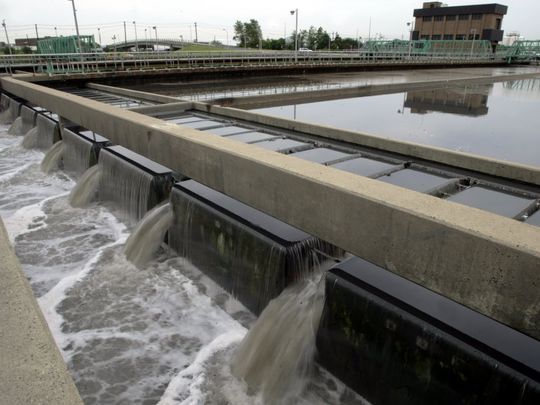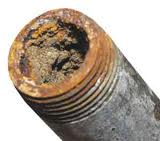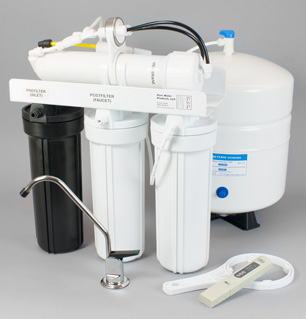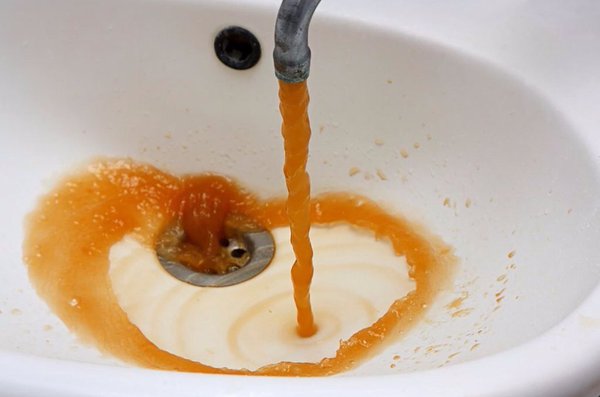Brackenridge plan to use chloramines to treat water leads to lead worries
by Madasyn Czebiniak
Editor’s Note: We’re reprinting this article from the April 29. 2017 issue of the Breckenridge (PA) Tribune-Review because it explains well the rationale of municipal water suppliers for switching from chlorine to chloramine as well as some of the consequent problems and issues resulting from the change. –Hardly Waite.
Pete Kristine doesn’t live in Brackenridge anymore. He grew up there, though, and visits his parents in their Nelson Avenue home just about every day.
Their house is old, as are many in Brackenridge, so Kristine believes it’s likely the house has water pipes that contain lead.
That’s one of the reasons he questions the Brackenridge Borough Water Treatment Plant’s decision to switch from chlorine to chloramines to disinfect the water it treats.
Chloramines can be more corrosive than chlorine, allowing lead in pipes to be released into the water.
Chloramines were the reason Washington, D.C., experienced “alarming” levels of lead in its drinking water between 2001 and 2004, according to reporting by The Washington Post.
According to the Post, when the Washington Aqueduct, which supplies city water, switched from chlorine to chloramines, the chloramines corroded the city’s pipes and caused lead to leach into the water supply.
But Nick Colledge, water plant operator in Brackenridge, said that shouldn’t be a problem here.
Colledge said corrosion can be offset by adjusting the water’s acidity. He also said the plant will be testing sites where lead and copper have been detected in the past “to make sure we have everything where we want it.”
None of Brackenridge’s service connections contains lead, Colledge said.
Jeanne VanBriesen, a professor at Carnegie Mellon University whose research includes water treatment byproducts, said cases like Washington, D.C., have made water system operators well aware of what corrosion inhibitors they need to avoid problems.
Utilities making a change often will re-evaluate their corrosion control, she said.
Kristine isn’t concerned about the plant’s service connections, but rather the pipes in older homes that may still contain lead.
Tom Kristine, Pete’s father, said his home’s pipes haven’t been tested for lead.
“I guess that’s going to be the next thing, especially if they start to put chloramines into the water,” Tom Kristine said.
Lead not the real problem
Colledge said the real problem with much of the drinking water in the region is trihalomethanes, which are cancer-causing chemicals that form when organic compounds in water combine with chlorine.
Trihalomethanes are a common byproduct of using chlorine to disinfect drinking water.
“Drinking water with the elevated trihalomethane levels over a long period of time can lead to cancer and a lot of other health problems,” Colledge said.
Chloramines can disinfect drinking water and produce fewer trihalomethanes. That’s why Brackenridge is making the switch.
Brackenridge’s treatment plant, which gets its water from the Allegheny River, always has experienced elevated trihalomethane levels during the summer, and plant operators have been trying to find ways to reduce them.
Although this is the first year Brackenridge will use chloramines, it has been working with the state Department of Environmental Protection and the Allegheny County Health Department for 10 years to try to lower the organics in the water.
Colledge said the plant applied for a permit to install a chloramine system in December 2015 and received DEP approval a year later. The DEP still must inspect the new system before it comes online in June.
Brackenridge averaged between 70 and 75 parts per billion of trihalomethanes last year. The federal limit is 80 parts per billion.
The Fawn-Frazer Joint Water Authority — which serves Fawn, Frazer and parts of Buffalo, East Deer, Harrison and West Deer townships — also will get water treated with chloramines since Brackenridge supplies water to that authority.
Fawn-Frazer was in violation of federal trihalomethane standards last year, averaging a little more than 84 parts per billion.
Colledge said Fawn-Frazer’s average was higher because its treated water is stored longer, giving trihalomethanes more time to form.
“Fawn has to add more chlorine in their system to maintain their disinfectant levels — that makes the problem even worse,” Colledge said.
Fawn-Frazer authority Chairman Ed Adams did not respond to multiple requests for comment.
Authority office manager Terri Hessom declined to comment on the use of chloramines and how they may affect the authority’s trihalomethane levels. Fawn-Frazer customers affected by the change were notified in their March water bills.
“Overall, the chloramines had relatively the cheapest cost and the most guarantee for lowering the trihalomethanes,” Colledge said.
Chloramines will be used from May through October, which is when the trihalomethane levels are higher because of warmer water temperatures. The plant will switch back to chlorine during cooler months, when there are fewer organic compounds in the river water.
Other issues to address
Colledge, along with the DEP, insist that water treated with chloramines is safe to drink.
They have been used by numerous water systems for almost 90 years, and their use is closely regulated, according to DEP.
The DEP says 73 public water systems serving more than 4 million people in Pennsylvania have their water treated with chloramines, and about one-third of all public water systems in the United States use chloramine for residual disinfection.
The Municipal Authority of Westmoreland County has been using chloramines since the 1970s.
But, Colledge said, those who use home dialysis equipment and residents who have ponds or aquariums would potentially have a problem if they don’t take action.
To eliminate those issues, Colledge said residents with aquariums or ponds will need to buy a chemical that gets rid of chloramines as opposed to chlorine.
He said those who use home dialysis equipment should switch from a chlorine-type filter to a chloramine-type filter.
And year-round use of chloramines can result in elevated nitrate levels in the water. That can be harmful to small children, Colledge said.
“By switching to the chlorine over the winter and flushing our water system, we eliminate that problem completely,” he said.
Concerns linger
Still, the Kristines plan to voice their concerns about chloramines at Brackenridge’s council meeting this week.
Borough officials plan to discuss the chloramine issue before council’s regular meeting.
“Whether it’s the trihalomethanes, whether it’s the potential lead release, whether it’s the chloramine, it just needs to be discussed openly and honestly with everyone that it’s going to affect in order to find the right solution for everyone,” Pete Kristine said.
“We’ll see what happens with this meeting,” Tom Kristine said. “Maybe they’ll reconsider or go some other route.”
Source: Breckenridge Tribune Review.










